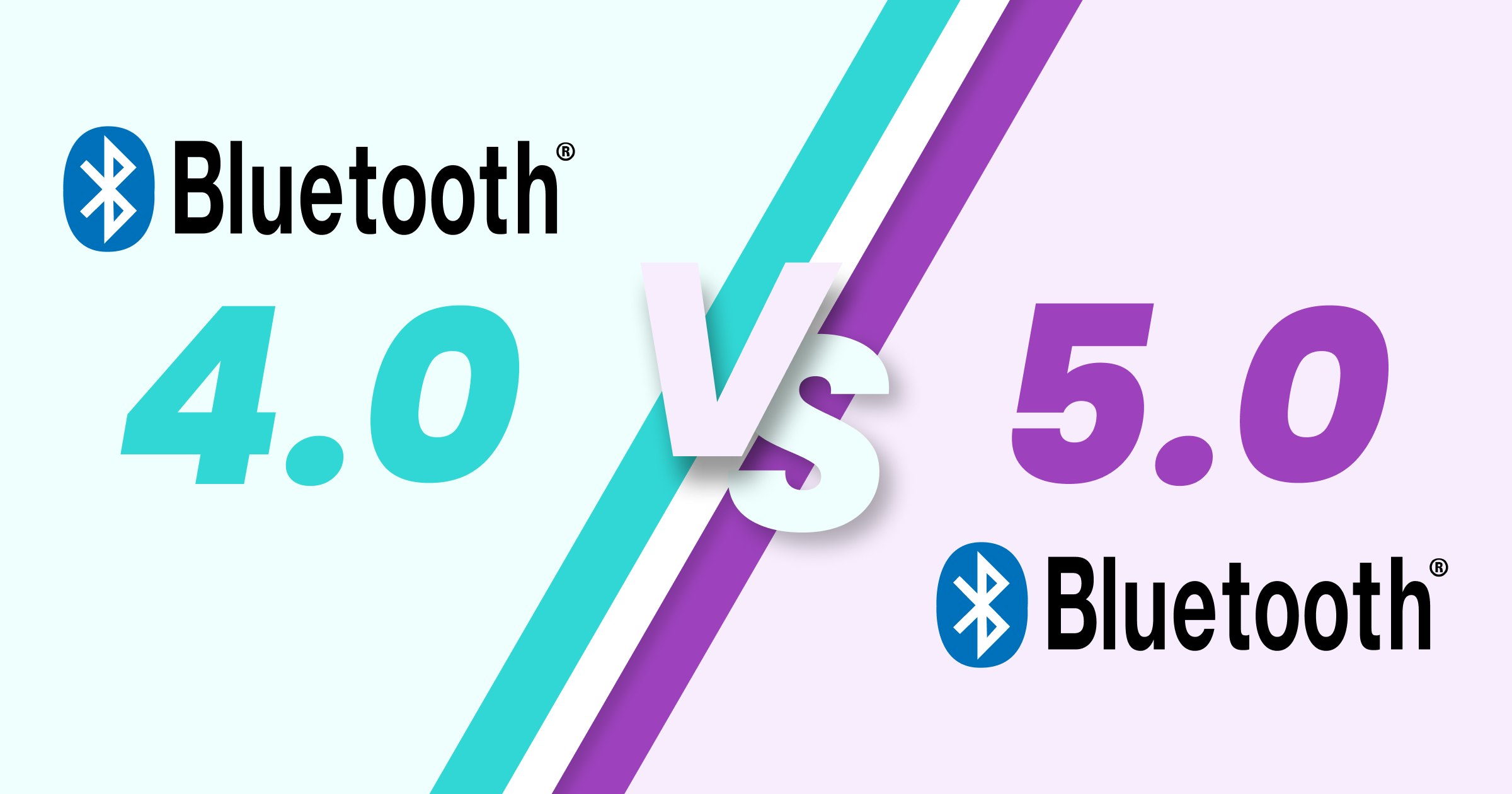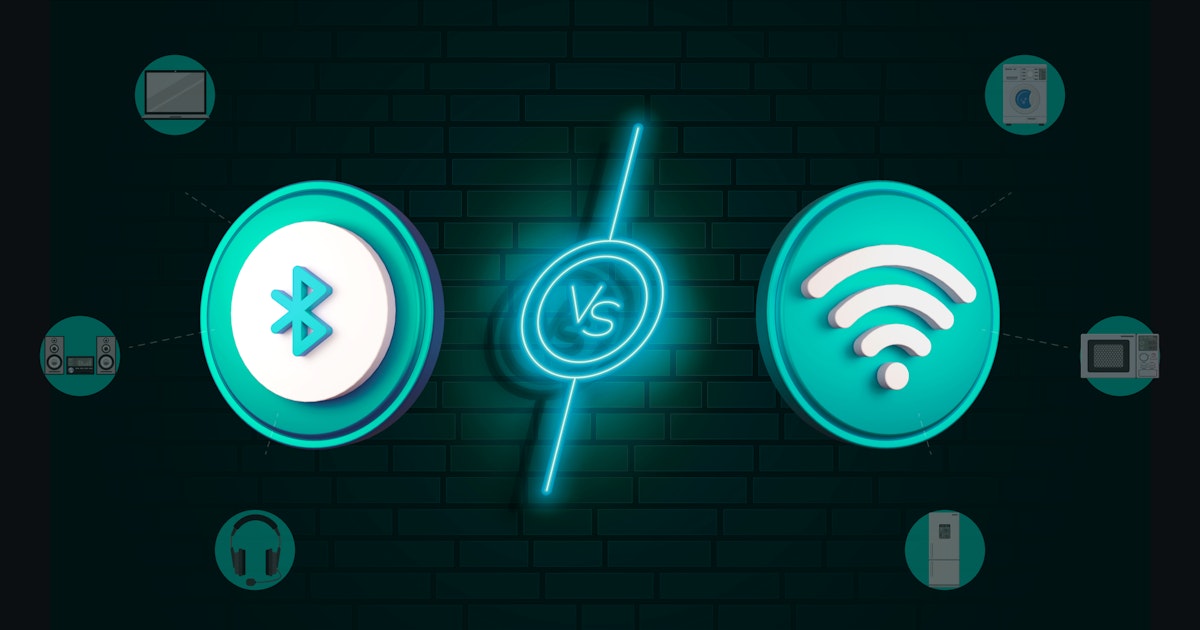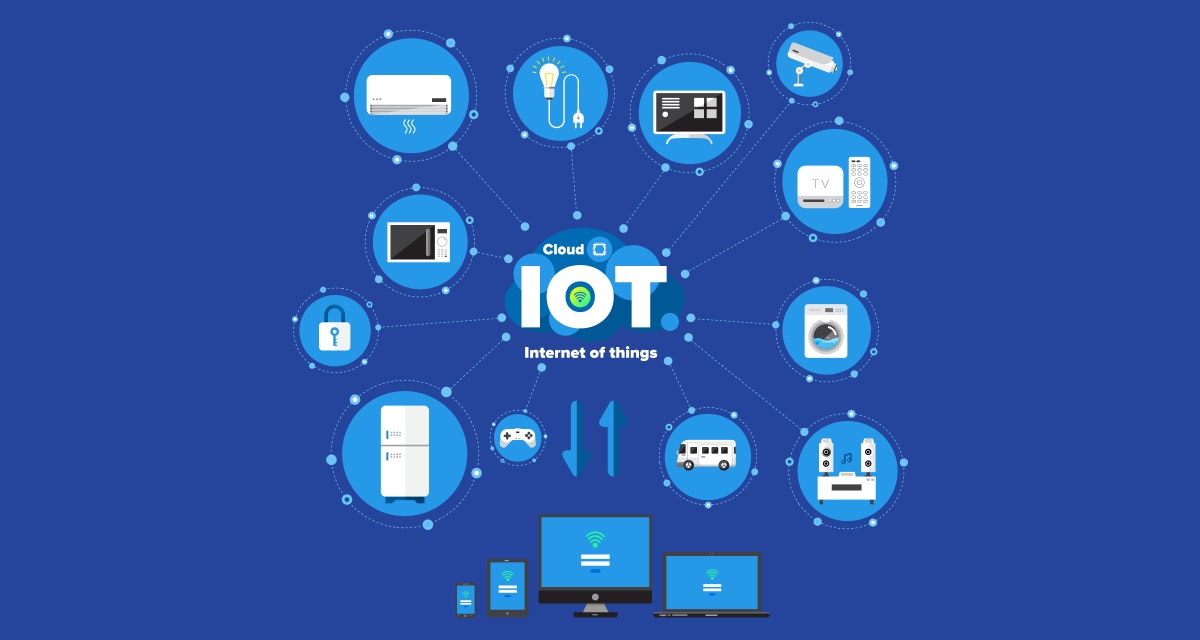Table of Contents
There is no denying that Bluetooth is the most popular wireless technology used in all electronic devices today. Each year, consumers are delighted with more modern Bluetooth versions - whether it is for smartphones or the Internet of Things.
From audio streaming (in-car speakers) and location services (asset tracking) to data transfer (fitness trackers and wellness monitors) and device networks (monitoring systems) - Bluetooth has created an important role for itself in our day-to-day lives.
But such was not the case before. It was only in 2014 that Bluetooth 4.0 got an upgrade and was launched in the market with a new feature, Bluetooth Low Energy [BLE], to meet the increasing demand for wireless connectivity between small devices.
This version was geared towards apps that required lower power consumption, such as fitness wearables that transmit temperature data in small amounts to mobile phones on request. Other features of the version included low energy secure connection and link-layer privacy.
Bluetooth version 5.0 specifications at a glance
After the subsequent success of version 4.0, the market introduced Bluetooth version 5.2 on December 31, 2019. Although geared towards low-powered apps, it offers an improved BLE data rate and range - allowing devices to send even more sophisticated data to the end-users.
Unlike Bluetooth 4.0, it provides four different data rates to accommodate various transmission ranges: 2Mbps, 1Mbps, 500kps, and 125kps. That results in better call quality and significantly superior performance and functionality.
That makes it a clear successor to Bluetooth 4.0 thanks to its pro-Internet of Things upgrades and Bluetooth beacon . This article attempts to analyze Bluetooth 5.0 vs. 4.0, along with their variations in detail. But first, let us take a step back to study its history.
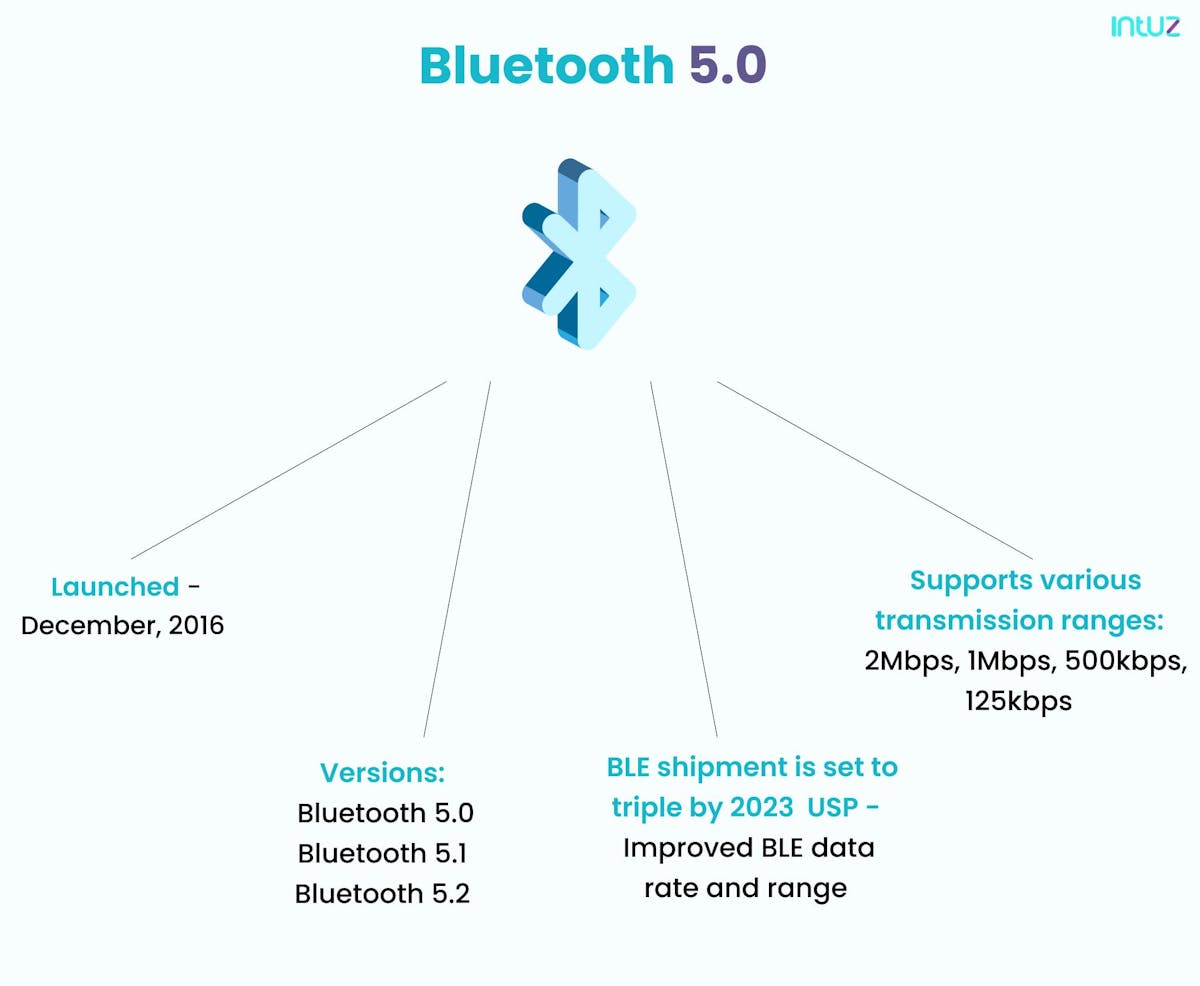
Bluetooth - how it all began
Bluetooth was invented by an electrical engineer Jaap Haartsen in 1994, while working for Ericsson in Sweden, as an alternative to the RS-232 cable standard for connecting PCs to computer peripherals.
Four years later, Haartsen played a crucial role in setting up the Bluetooth Special Interest Group (SIG), comprising 35,000+ member companies in various sectors such as computing, telecommunications, and consumer electronics.
Today, the body controls technology development, protects trademarks, and runs a management qualification program to ensure all manufacturers comply with their standards to sell a Bluetooth device.
So far, Bluetooth has released 12 versions, most of which are stemming from the same series:
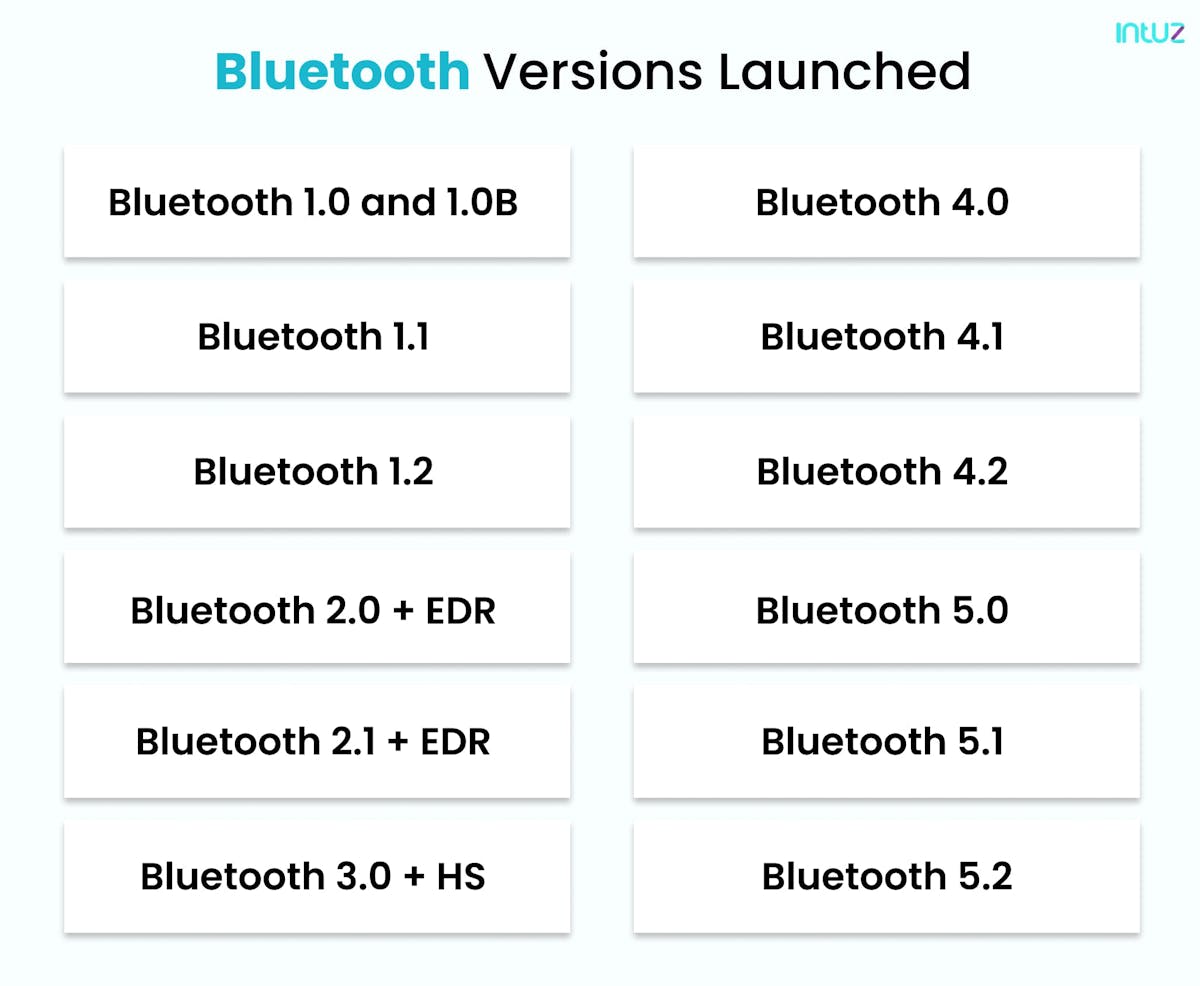
Bluetooth: a number game
An ABI Research states that Bluetooth beacons are expected to reach a 133% CAGR between 2016 and 2021 in retail, advertising, and personal tracking sectors. In 2020, the volume of BLE-enabled devices shipped worldwide is expected to reach 8.45 billion.
Moreover, BLE shipment is set to triple by 2023, with 1.6 billion devices shipping each year. Speaking of demographics, North America has the highest rate of Bluetooth usage at approximately 40% across devices thanks to increased use of hands-free headsets, connected watches, and other Internet of Things Development.
The technology has undoubtedly evolved from connecting PC ancillary systems into a domestic IoT connectivity solution. Let us study some compelling use cases of Bluetooth.
Bluetooth creates a buzz in the market
1. Find your airport terminal
Miami International Airport installed Bluetooth beacons to each terminal and critical areas such as restrooms and food courts. That way, travelers can download the airport app and be guided straight to their terminal from the security check-in area.
2. Skip the long queues
Since 2013, Apple Stores in the USA have been using beacons to communicate with users once they enter the facility and check-in for the Apple Store app's service. They are sent notifications on their Apple devices regarding discounts, sales, hot favorites, and more.
3. Enjoy guided museum tours
The Brooklyn Museum of Art provides guided tours through their official app. Location-based triggers serve content as visitors walk through the museum. It is an impressive way for the museum to communicate with visitors and allows the latter to interact with the exhibits of their liking.
Bluetooth vs. WiFi — Which Is Better For Connectivity For IoT Development?
Learn NowBluetooth 5.0 vs. 4.0 - A detailed comparative analysis
Bluetooth 5.0 was rolled out in 2016 and designed to meet all the wireless world's advanced privacy and security standards. It requires the latest hardware to run smoothly and is not compatible with its older versions, like Bluetooth 4.0. So, how do the two versions fare against each other? Time to analyze Bluetooth 5.0 vs. 4.0:
1. Speed
One of the most impressive Bluetooth version 5.0 specifications includes speed. It is twice as fast as Bluetooth 4.0. Clocking in at a decent 2Mbps, it can meet all the Internet of Things compatibility requirements.
A packet of data worth 251 bytes can actually be sent in 1060 microseconds compared to the previous version that recorded a set time frame of 2120 microseconds.
-
This shows that even though the data is sent faster, the packets' distance has not been shortened or wedged. In a nutshell, Bluetooth 5.0 is certainly 1.7X faster than BLE 4.2.
2. Range
The range is one aspect that consumers would not notice audio either start cutting out or completely stops because the device is out of range. This was an issue with Bluetooth 4.0; however, the advanced technology states otherwise.
While Bluetooth 4.0 supports 10m in an indoor range and 50m outdoors, its successor supports 200m in the outside environment and 40m indoors. That shows that Bluetooth version 5.0 specifications are far superior to any versions of Bluetooth 4.0.
Bluetooth 5 allows low-energy transmission providing data range for more range.
-
The advanced range means you can listen to music through your wireless headsets from your smartphone while moving around the house or garden without disrupted streaming.
3. Battery bandwidth
As you know, Bluetooth version 5.0 specifications were refined for the Internet of Things. That means the new version of Bluetooth was designed to use less power on each device than version 4.0. For instance, all audio devices communicate over BLE, and you can switch on your Bluetooth for a more extended period without worrying about the battery running out.
How else do you think your headsets or smartwatches can sustain and go on for such long hours? Sure, the hardware has a huge role to play in power consumption. But the maximum transmits the power in Bluetooth 5.0 stands at +20 dBm while the older version was defined at +10 dBm.
4. Compatibility
Compatibility is a huge factor in technology, mainly if you deal with mobile phones or the Internet of Things. You would want to move forward with new trends and continually upgrade your various tech devices. However, that is not always possible.
You cannot just throw your smartwatch in the bin or purchase a new mobile phone only to stay in vogue! That is the issue Bluetooth version 5.0 specifications address once and for all!
-
Bluetooth 4.0 is only compatible with devices that were designed specifically for the version 4 series. However, it will not work with devices that have Bluetooth 5. Although that is not a problem with version 5 and is backward-compatible with all version 4 series, it will not utilize all Bluetooth version 5.0 specifications on the device.
5. Hardware support
Bluetooth 5 met the requirements for the Internet of Things thanks to its extraordinary range and increased speed. Its predecessor, on the other hand, gets a boot because of its speed and faulty range. Samsung Galaxy 8 and 8+ work well with Bluetooth 5.0.
However, to take full advantage of Bluetooth 5.0, you will need the new and improved gear. For instance, you might need a Bluetooth adapter to make a device work properly. By plugging into a USB port, you can upgrade your device with the latest version.
This is not the case with Bluetooth 4.0 - which won't be compatible with any version series except for its own.
Sensing-As-A-Service: The Present And Future
Take A Ride6. Message capacity
Bluetooth version 5.0 specifications include a large messaging capacity of 255 bytes, giving more bytes for actual data payload. However, Bluetooth 4.0 has a small message capacity of 31 bytes that only give 17-20 bytes for actual data payload.
7. Bluetooth beacon
When we were at the use cases section, we learned about the Miami International airport installed beacons for a better traveling experience? Well, the reason Bluetooth 5.0 beacons are so popular is because of their range and speed. However, the same cannot be said about Bluetooth 4.0, which had lesser speed and range.
Bluetooth 5.0 offers a connectionless Internet of Things, which makes its beacons so apt! It optimizes responsiveness and ensures faster and smoother connectivity.
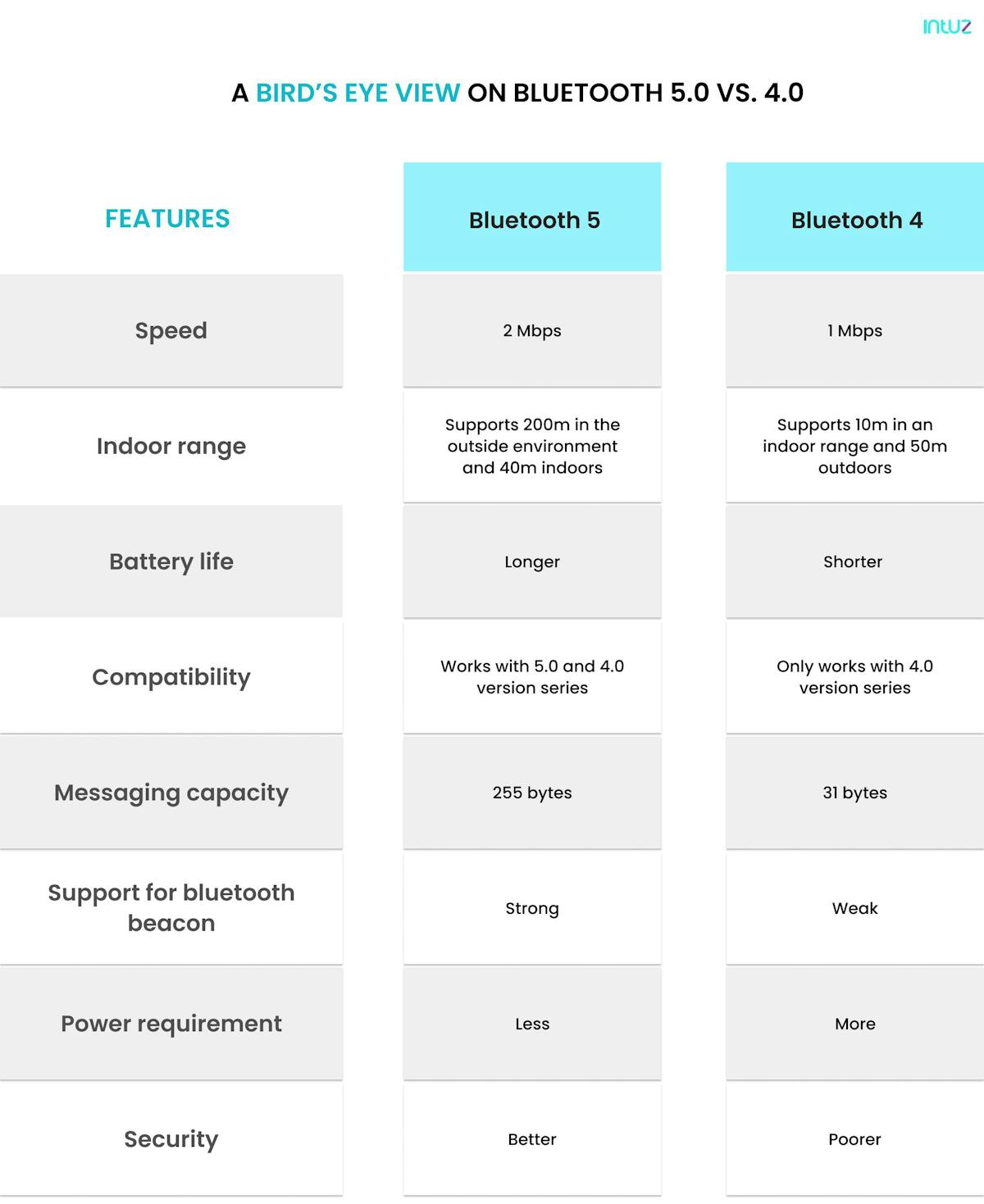
Should you really get Bluetooth 5?
When considering the benefits of Bluetooth 5.0 over Bluetooth 4.2, the features that stand out are the faster speed and the greater range. You can get up to twice the speed (2Mbps versus 1 Mbps), four times the range (800 feet versus 200 feet), and eight times the bandwidth of your old Bluetooth. We have discussed all of this before.
It is important to remember, though, that you cannot have all of it at the same time — the devices need to choose between speed or range for any given transfer of information.
For instance, a Bluetooth tracker tag might opt for greater range, while headphones designed mainly for music playback might prefer greater speed.
Of course, these are ‘line of sight’ maximums, so anything that comes in the way of the two objects will naturally interfere with the signal.
Nonetheless, these are commendable improvements, and they also apply to BLE, so your IoT devices can benefit from better speed and range while still being power-efficient.
Another major advantage of Bluetooth 5.0 is that it simultaneously enables two devices to pair with a third device. Imagine this scenario: there are two people with their wireless headphones listening to the same music from the same smartphone or controlling the speakers in your bathroom as well as your kitchen with just one phone.
That being said, we recommend that you go for Bluetooth 5.0 only if you know that all the paired devices will be using it. For instance, your phone might support Bluetooth 5.0, but your car or your smart home device might not.
In fact, this is quite likely, as automobile manufacturers are not always super-prompt about updating their cars’ Bluetooth, and the same applies to home device makers. So, please do your research before you think of upgrading to that.
Luckily, Bluetooth 5.0 is backward-compatible with Bluetooth 4.2, so your two devices can still connect and share information the usual way, even if you cannot leverage the extra speed and range. Plus, if you are genuinely keen on making Bluetooth 5.0 a part of your life, consider verifying that any new item you buy is compatible with it.
Wrapping it up
As the Internet of Things, Android app development, and iOS app development expand, Bluetooth's usage will continue to soar for days to come. One cannot imagine life without Bluetooth, is it not?
When Apple first introduced the headphone Jack many years ago, they embraced Bluetooth technology as the new audio connectivity standard. Since then the technology has evolved by leaps and bounds, and the article proves how!
Given what we have learned in our comparative analysis of Bluetooth 5.0 vs. 4.0, there is no doubt that Bluetooth 5 version series are much better than the previous versions.
If you need any assistance concerning Bluetooth-compatible Android app development and iOS app development, please do not hesitate to contact us.
